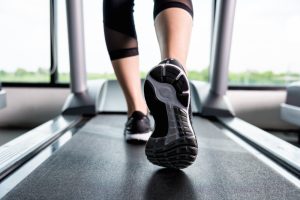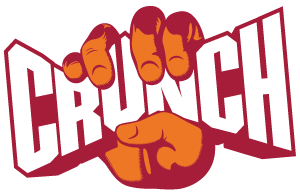If you’re currently on a weight loss journey and you’re struggling to fit additional gym sessions or sets into your already full schedule, not to worry.
We have the perfect exercise that will not only help you lose weight but requires no equipment or gym membership and can be easily incorporated into your routine: walking.
Yes, you heard right, walking is one of the most underrated forms of exercise! And we’ve got all you need to know about why it’s so great, plus simple tips on how to fit it into even the busiest lifestyles. Ready? Let’s get going!

Calories burned
When it comes to weight loss, we know that the determining factor is going to be energy balance which is calorie intake (CI) vs your total daily energy expenditure (TDEE). Your total daily energy expenditure is made up of the following:
- Basal Metabolic Rate (BMR) – Your BMR makes up 70% of your daily energy expenditure. It’s made up of your body’s metabolic processes which happen even at rest, another name referred to this is resting energy expenditure.
- Non-resting energy expenditure is made up of three components:
- NEAT (non-exercise activity thermogenesis) which contributes 15% this is basically any movement you do daily that isn’t exercise including walking.
- TEF (thermic effect of feeding) contributes 10% and is calories burnt through digestion when breaking down food.
- Finally EAT (exercise activity thermogenesis) which believe it or not only makes up 5% of your daily energy expenditure which is calories burnt through exercise alone!
So, as you can see, if you walk every day you are contributing 15% to TDEE! And just by focusing on improving daily movement, you’ll have a greater impact on improving your energy balance equation to help you lose weight!
You’re probably thinking, “but how many calories do I burn when I’m just walking?” Well, this depends on 5 key factors which contribute to calories burnt through walking.
- Bodyweight: A person with more body weight will burn more calories compared to someone who weighs less for the same distance and pace
- Intensity & pace: The faster the pace and the more intense the walk, the more calories are burned
- Terrain: Walking on hills or uneven terrain burns more calories than walking on flat surfaces.
- Duration: The longer the walk, the more calories burnt 😉
- Age and gender: younger people tend to burn more calories than older people for the same activity, and men typically burn more calories than women due to differences in muscle mass.
All these factors can affect the number of calories burned while walking, and it is important to consider them accurately to estimate the calorie burned.
Understanding the “energy in, energy out” equation
Now let’s set the idea of walking aside for a minute and go back to basics. When thinking about weight loss we need to be aware that weight loss and fat loss are two different things. When losing weight, not all the weight you are going to lose is going to be body fat, however, most people’s goals will be to lose fat as by reducing body fat you’ll look leaner, more toned and show off any muscle mass you have.
If your goal is to lose say 5kgs or 10 pounds in the space of 10 weeks for example, we know that to lose 1 pound of body fat this is going to require a deficit of 3,500 calories.
Breaking this down to a daily deficit of 500 calories, now doing this through diet only may be challenging because if you’re eating 2000 calories per day, reducing 500 calories from your food is nearly a quarter of your intake.
However, if you were to reduce your calories by just 200 from food by making smarter choices such as swapping full-fat milk to skimmed or almond milk and changing your meat to the leaner option it’s easier to do.
Combine this with 60 minutes of walking a day to burn 300 calories which can be broken up into three twenty-minute walks and this is looking like a much more sustainable way of losing those 10 pounds in 10 weeks, don’t you think?
Think about upping the intensity to increase the calorie burn
As discussed above if you’re looking to increase your overall calorie burn to drive weight loss then increasing the intensity which could be hiking on hilly terrain a few days a week will deliver results more quickly than walking slowly on level ground once a week, so consider how you spend your weekends if your goal is to lose weight perhaps exploring some national parks, hiking and finding some trails to explore will not only be a fun-filled weekend you’ll reap the benefits alongside it.
If your weight loss has stalled or you’re looking to increase your overall calorie burn then running is also a good option for you. You can check out our separate blog on Is Running Good For Weight Loss.
Other benefits
Compared to other forms of exercise, many people don’t view walking as effective for weight loss. People tend to prioritise jumping on a cross trainer, step machine or attending a HIIT class for the “afterburn” effect. These don’t provide you with all the other benefits that walking does, forming habits that contribute to good health and form the foundation of physical and mental well-being.
There is extensive research showing the benefits of walking for cholesterol, mood, and blood pressure, and reducing the risk of heart disease. If your Cholesterol is on the higher side, good news.
A study published in the journal “Atherosclerosis” found that walking just 30 minutes a day can improve cholesterol levels and reduce the risk of heart disease.
How to add 60 minutes of walking to your day
Getting started may seem daunting if you’re looking at adding in 60 minutes of walking to your already hectic and tight schedule, but not to worry we’re going to break it down for you to make things easier for you. First, look at how many steps you’re taking day to day. Most phones these days have an in-built pedometer tracking your daily steps. This will give you your baseline to get started, aim to increase maybe a couple of thousand steps a day in your first week.
Secondly, look at your current schedule:
- If you start your day with a 20-minute walk after hydrating and get some much-needed vitamin D, not only will you feel energised, you’ll be contributing to your weight loss result.
- Add in another 20-minute walk at lunchtime after your meal also aiding in digestion by moving your bowels, increasing cognitive function and brain activity helping to prevent that after-lunch slump in energy and driving up that calorie burn for the day.
- End your workday with another 20-minute walk, helping clear the head of all your work thoughts and stressors, then come home to your evening meal knowing you’ve ticked your movement off for the day without even stepping inside a gym.
Also, take a look at your commute. Do you take the train or bus to work, if you drive where do you park your car? Getting off one stop earlier or parking your car a little further away from the office is an easy way to add more walking into your daily routine without it feeling like a chore.
Once you’ve established a consistent step count of say 10,000 steps a day for a couple of weeks then you can look at increasing the intensity or duration, get off two stops before your usual stop, at the weekend get out for a hike in nature or find a trail that’s going to be a little more challenging but most importantly enjoy the process, keep your head out of your phone and take in your surroundings and appreciate the beauty in nature.
When it comes to weight loss, it’s about sustainable, incremental changes that involve building better habits we can foresee ourselves continuing for the rest of our lives, walking is a positive behaviour not only for our physical health but our mental well-being too and with little to no barrier to entry this in my eyes, is the best form of exercise anyone can do, so start slow, set yourself some mini goals and get yourself outside.
Or if you’d like some support from one of our expert Personal Trainers then visit your local Crunch gym, check out our wide range of equipment and they will aid you in getting started on your health and fitness journey.
So why not try us out with a free pass today?
WANT A FREE GYM SESSION!?
Hit the link below to receive your FREE GYM PASS to your nearest CRUNCH Gym!
👉🏻 CLICK HERE
Take care, and stay healthy!
The Crunch Fitness Team.
- Cholesterol: Jebb, S. A., Caudwell, P., Finlayson, G., Hopkins, M., Hounsham, N., & Cale, L. (2007). The effect of increased physical activity on cholesterol. Atherosclerosis, 193(2), 251-258.


Crunch Fitness Virtual Assistant
 I'd like some help reaching my Fitness goals!
I'd like some help reaching my Fitness goals! I'm an existing member and would like some help!
I'm an existing member and would like some help! I have some questions about becoming a Crunch member!
I have some questions about becoming a Crunch member!